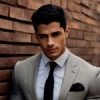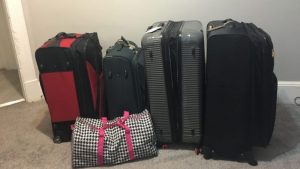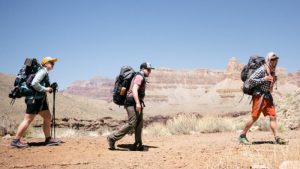Western Hunan province, known for its breathtaking landscapes and rich cultural history, continues to draw visitors seeking a blend of natural beauty and historical significance.
While Fenghuang (凤凰) and Zhangjiajie National Park, home to the world’s longest glass bridge, are the marquee attractions, the region offers a host of lesser-known yet equally captivating destinations.
Improved infrastructure, such as the high-speed train line connecting Huaihua (怀化) with cities like Kaili (凯里), Guiyang, and Changsha, has made these hidden gems more accessible than ever.
Here’s a look at the top lesser-known destinations in Western Hunan that should be on every traveler’s list.
1. Dehang (德夯)
Dehang, a picturesque Miao ethnic village, is situated near Jishou (吉首) and is just a short journey from Fenghuang (凤凰).
Surrounded by jagged peaks that echo the dramatic scenery of Zhangjiajie, Dehang is known for its stunning natural beauty and serves as a popular starting point for mountain hikes.
Though not as familiar to international travelers, it is well-loved by domestic tourists.
For an entrance fee of 100 RMB, visitors can explore the village’s unique cultural elements and embark on scenic trails that reveal breathtaking vistas.
2. Furong (芙蓉)
Nicknamed “Hibiscus Town,” Furong (芙蓉), or Wang Cun (王村), is another hidden treasure nestled between verdant hills and a picturesque cliff.
This ancient village, located near Jishou, boasts a rich history and authentic charm that have made it a favorite among Chinese tourists.
With its narrow lanes and cascading waterfalls, Furong offers a unique blend of nature and history.
Visitors are encouraged to explore its traditional architecture and enjoy the laid-back atmosphere, which remains relatively undiscovered by international visitors.
3. Qianzhou (乾州)
Steeped in historical significance, Qianzhou (乾州) was built as a military stronghold during the Ming dynasty.
This ancient town served as a borderland region between Han Chinese and various ethnic groups, including the Miao and Dong, who often resisted outside incursions.
While recent renovations have modernized some aspects of Qianzhou, it still retains its rural roots and historical allure.
Located a few kilometers south of Jishou, Qianzhou remains largely unknown to foreign travelers but is frequented by local tour groups who appreciate its deep historical roots.
4. Jingping (荆坪)
Jingping (荆坪), located south of Huaihua (怀化) along the old road to Qianyang (黔阳), is home to the Pan Clan Ancestral Hall.
This architectural marvel is celebrated for its exquisite carvings that adorn its facade. While the village itself may seem modest at first glance, the intricacy of the Pan Clan Hall’s carvings is truly a sight to behold.
For visitors interested in rural craftsmanship and history, Jingping provides a serene and culturally rich experience.
5. Qianyang (黔阳)
The ancient town of Qianyang (黔阳) is a maze of narrow, slab-stone streets, adorned with red lanterns and lined with Ming-era homes.
Its architecture and winding alleys transport visitors back in time, offering a rare glimpse of authentic rural life.
Temples, some of which have been repurposed as homes, dot the town, blending past and present.
Just 60-70 kilometers south of Huaihua, Qianyang is a must-visit for those seeking a blend of history, culture, and scenic beauty.
6. Hongjiang (洪江)
Hongjiang (洪江) stands out for its unique layout, with a maze of narrow alleys and staircases built on a hillside.
Historically a bustling business hub, Hongjiang has retained much of its old-world charm.
Renovated parts of the town attract guided tour groups, but it’s easy to slip into lesser-visited alleys for a more solitary and reflective experience.
Just 30 kilometers east of Qianyang, Hongjiang can be reached by bus from Huaihua or Qianyang, making it a convenient stop for travelers exploring the region.
While Fenghuang and Zhangjiajie are justifiably famous for their scenic and cultural offerings, Western Hunan is rich with hidden gems that deserve attention.
These lesser-known destinations provide a unique glimpse into the region’s ethnic diversity, historical depth, and natural beauty.
Whether you’re hiking through the peaks of Dehang, marveling at the intricate carvings in Jingping, or navigating the ancient alleys of Qianyang and Hongjiang, these hidden treasures offer a more intimate and rewarding travel experience.
Plan your journey to Western Hunan and discover the stories and sights that lie beyond the well-trodden paths.








